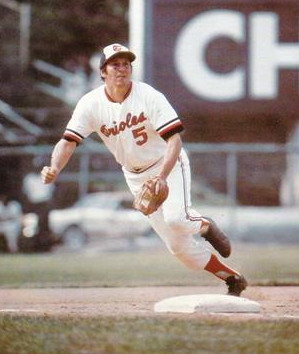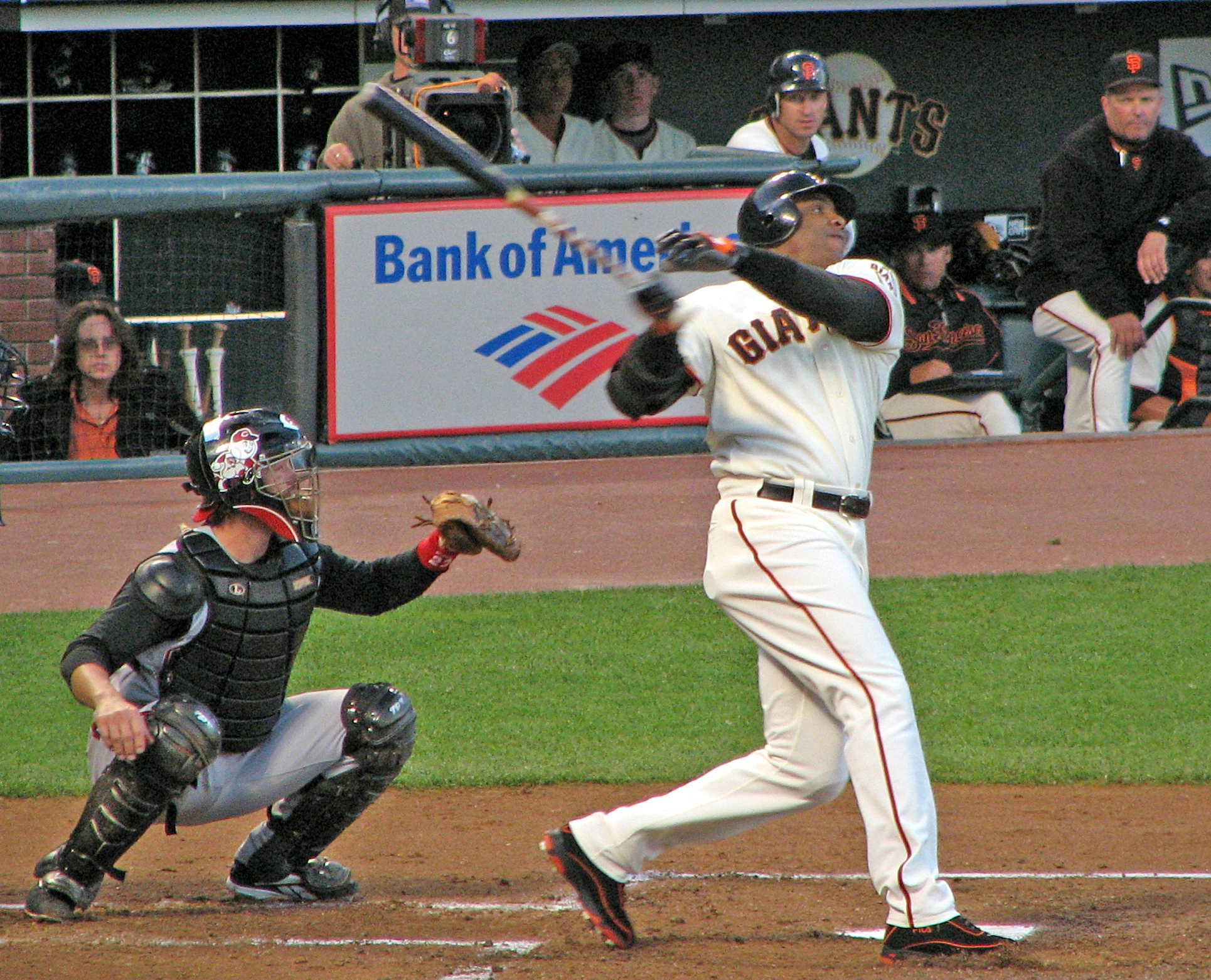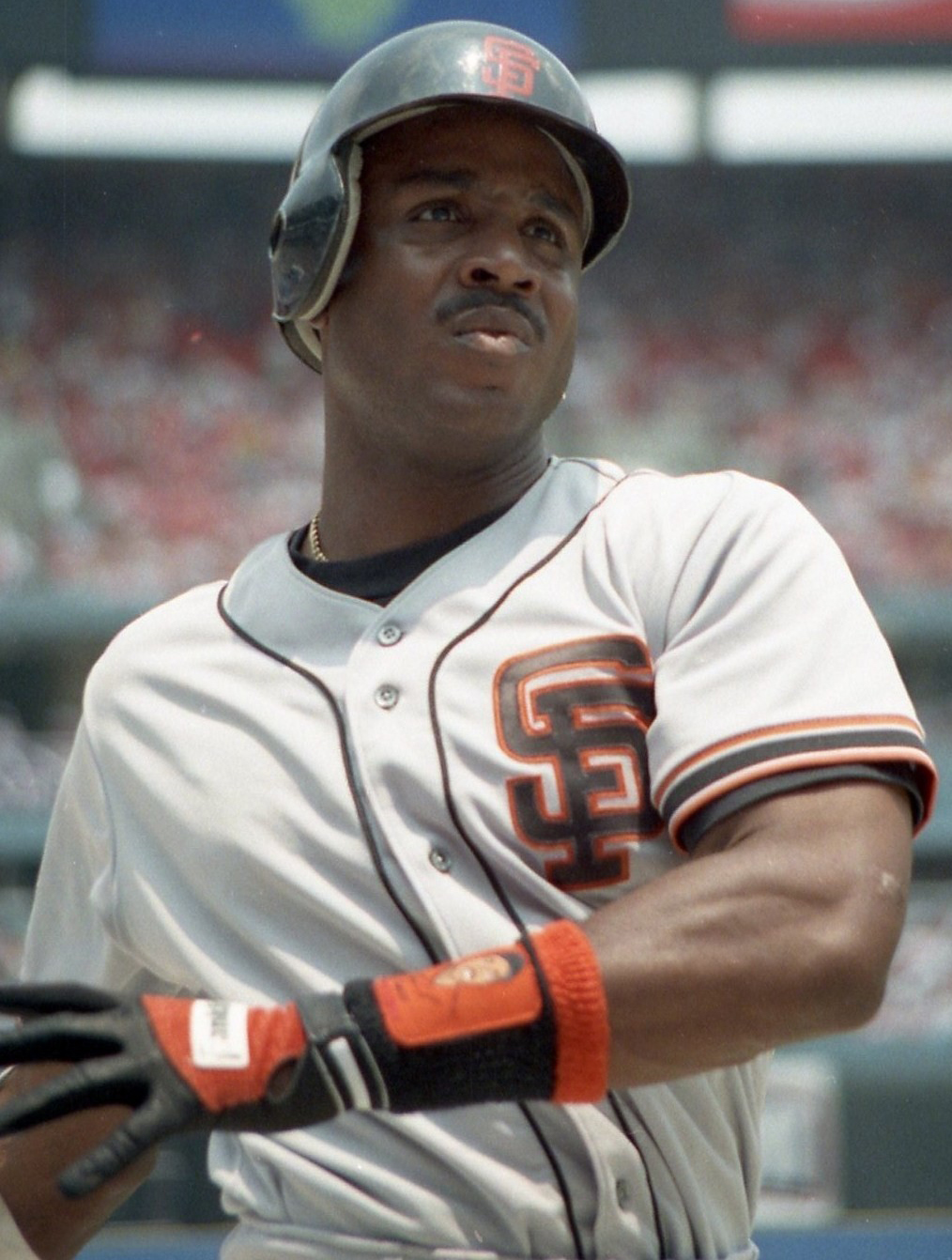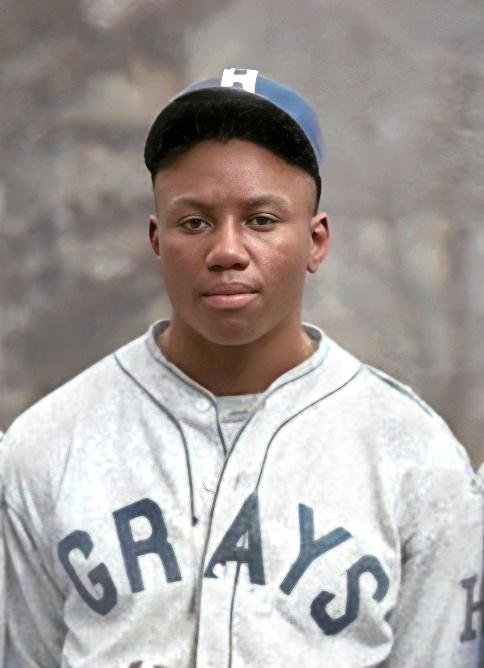|
Dean Palmer
Dean William Palmer (born December 27, 1968) is an American former third baseman in Major League Baseball who had a 14-year career from 1989 to 2003. He played for the Texas Rangers, Kansas City Royals and Detroit Tigers, all of the American League. In 1991, Palmer won the American Association home run title with 22 HRs despite only playing in 60 games. In 1992, Palmer became the first Texas ballplayer to homer in the first three games of a season, a feat that was matched in 2011 by Ian Kinsler and Nelson Cruz. He was selected for the American League All-Star team in 1998, as the required Royal, and he led the league in strikeouts in 1992 with 154. Palmer was the recipient of the Silver Slugger at third base in 1998 with the Kansas City Royals and 1999 for the Detroit Tigers. Palmer retired following the 2003 baseball season, after various injuries limited him to fewer than 100 games over the three previous seasons. He attempted a comeback with the Tigers during 2005 spring t ... [...More Info...] [...Related Items...] OR: [Wikipedia] [Google] [Baidu] |
Third Baseman
A third baseman, abbreviated 3B, is the player in baseball or softball whose responsibility is to defend the area nearest to third base — the third of four bases a baserunner must touch in succession to score a run. In the Baseball scorekeeping, scoring system used to record defensive plays, the third baseman is assigned the number 5. Third base is known as the "hot corner", because the third baseman is often the infielder who stands closest to the batter—roughly 90–120 feet away, but even closer if a Bunt (baseball), bunt is expected. Most right-handed hitters tend to hit the ball hard in this direction. A third baseman must possess good hand-eye coordination and quick reactions to catch batted balls whose speed can exceed . The third base position requires a strong and accurate arm, as the third baseman often makes long throws to first base or quick ones to second baseman, second base to start a double play. As with middle infielders, right-handed throwing players are ... [...More Info...] [...Related Items...] OR: [Wikipedia] [Google] [Baidu] |
Silver Slugger
The Silver Slugger Award has been awarded annually since 1980 to the best offensive player at each position in both the American League (AL) and the National League (NL), as determined by the coaches and managers of Major League Baseball (MLB). These voters consider several offensive statistics, including batting average, slugging percentage, and on-base percentage, as well as their "general impressions of a player's overall offensive value". They are not permitted to vote for players on their team. The award is a bat-shaped trophy, three feet (91 cm) tall, engraved with the names of each of the winners from the league and plated with sterling silver. It is given by Hillerich & Bradsby, the manufacturer of Louisville Slugger bats. Ten Silver Slugger Awards are given each year per league individually. One each goes to a catcher, first baseman, second baseman, third baseman, and shortstop. Three outfielders receive the award, irrespective of their specific position; for insta ... [...More Info...] [...Related Items...] OR: [Wikipedia] [Google] [Baidu] |
1968 Births
Events January–February * January 1968, January – The I'm Backing Britain, I'm Backing Britain campaign starts spontaneously. * January 5 – Prague Spring: Alexander Dubček is chosen as leader of the Communist Party of Czechoslovakia. * January 10 – John Gorton is sworn in as 19th Prime Minister of Australia, taking over from John McEwen after being 1968 Liberal Party of Australia leadership election, elected leader of the Liberal Party of Australia, Liberal Party the previous day, following the disappearance of Harold Holt. Gorton becomes the only Australian Senate, Senator to become Prime Minister, though he immediately transfers to the Australian House of Representatives, House of Representatives through the 1968 Higgins by-election in Holt's vacant seat. * January 15 – The 1968 Belice earthquake in Sicily kills 380 and injures around 1,000. * January 21 ** Vietnam War: Battle of Khe Sanh – One of the most publicized and controversial battles of the ... [...More Info...] [...Related Items...] OR: [Wikipedia] [Google] [Baidu] |
List Of Major League Baseball Career Home Run Leaders
This is a list of the 300 Major League Baseball players who have hit the most career home runs in regular season play (i.e., excluding playoffs or exhibition games). In the sport of baseball, a home run is a hit in which the batter scores by circling all the bases and reaching home plate in one play, without the benefit of a fielding error. This can be accomplished either by hitting the ball out of play while it is still in fair territory (a conventional home run) or by an inside-the-park home run. Barry Bonds holds the Major League Baseball home run record with 762. He passed Hank Aaron, who hit 755, on August 7, 2007. The only other players to have hit 700 or more are Babe Ruth with 714, and Albert Pujols with 703. Alex Rodriguez (696), Willie Mays (660), Ken Griffey Jr. (630), Jim Thome (612), and Sammy Sosa (609) are the only other players to have hit 600 or more. Giancarlo Stanton is the active home run leader with 429. Players in bold face are active as of the 2025 ... [...More Info...] [...Related Items...] OR: [Wikipedia] [Google] [Baidu] |
1996 American League Division Series
The 1996 American League Division Series (ALDS), the opening round of the American League side in Major League Baseball’s (MLB) 1996 postseason, began on Tuesday, October 1, and ended on Saturday, October 5, with the champions of the three AL divisions—along with a "wild card" team—participating in two best-of-five series. The teams were: *(1) Cleveland Indians (Central Division champion, 99–62) vs. (4) Baltimore Orioles (Wild Card, 88–74): Orioles win series, 3–1. *(2) Texas Rangers (Western Division champion, 90–72) vs. (3) New York Yankees (Eastern Division champion, 92–70): Yankees win series, 3–1. The higher seed (in parentheses) had the home field advantage, which was not tied to playing record but was predetermined—a highly unpopular arrangement which was discontinued after the 1997 playoffs. Also, the team with home field "advantage" was required to play the first two games on the road, with potentially the last three at home, in order to reduce trav ... [...More Info...] [...Related Items...] OR: [Wikipedia] [Google] [Baidu] |
Fielding Percentage
In baseball statistics, fielding percentage, also known as fielding average, is a measure that reflects the percentage of times a baseball positions, defensive player properly handles a batted or thrown ball. It is calculated by the sum of putouts and assist (baseball), assists, divided by the number of total chances (putouts + assists + error (baseball), errors). While a high fielding percentage is regarded as a sign of defensive skill, it is also possible for a player of lesser defensive skill to have a high fielding percentage, as it does not reflect or take into account a player's defensive range factor, range; a player who cannot get to a ball surrenders a hit (baseball), hit instead of having an opportunity to make an out (baseball), out or an error (baseball), error. Conversely, a highly skilled fielder might have a comparatively low fielding percentage by virtue of reaching, and potentially missing, a greater number of balls. In order to qualify for the league lead in fie ... [...More Info...] [...Related Items...] OR: [Wikipedia] [Google] [Baidu] |
Slugging Percentage
In baseball statistics, slugging percentage (SLG) is a measure of the batting productivity of a hitter. It is calculated as total bases divided by at-bats, through the following formula, where ''AB'' is the number of at-bats for a given player, and ''1B'', ''2B'', ''3B'', and ''HR'' are the number of singles, doubles, triples, and home runs, respectively: : \mathrm = \frac Unlike batting average, slugging percentage gives more weight to extra-base hits such as doubles and home runs, relative to singles. Such batters are usually referred to as sluggers. Plate appearances resulting in walks, hit-by-pitches, catcher's interference, and sacrifice bunts or flies are specifically excluded from this calculation, as such an appearance is not counted as an at-bat (these are not factored into batting average either). The name is a misnomer, as the statistic is not a percentage but an average of how many bases a player achieves per at bat. It is a scale of measure whose computed ... [...More Info...] [...Related Items...] OR: [Wikipedia] [Google] [Baidu] |
On-base Percentage
In baseball statistics, on-base percentage (OBP) measures how frequently a batting (baseball), batter reaches base (baseball), base. An official Major League Baseball (MLB) statistic since 1984, it is sometimes referred to as on-base average (OBA), as it is rarely presented as a true percentage. Generally defined as "how frequently a batter reaches base per plate appearance", OBP is specifically calculated as the ratio of a batter's times on base (the sum of Hit (baseball), hits, base on balls, bases on balls, and times hit by pitch) to the sum of at bats, bases on balls, hit by pitch, and sacrifice fly, sacrifice flies. OBP does not credit the batter for reaching base on error (baseball), fielding errors, fielder's choice, uncaught third strikes, Obstruction (baseball), fielder's obstruction, or catcher's interference, and deducts from plate appearances a batter intentionally giving himself up in a sacrifice bunt. OBP is added to slugging average (SLG) to determine on-base plus ... [...More Info...] [...Related Items...] OR: [Wikipedia] [Google] [Baidu] |
Bases On Balls
A base on balls (BB), better known as a walk, occurs in baseball when a batter receives four pitches during a plate appearance that the umpire calls '' balls'', and is in turn awarded first base without the possibility of being called out. The base on balls is defined in Section 2.00 of baseball's Official Rules, and further detail is given in 6.08(a). Despite being known as a "walk", it is considered a faux pas for a professional player to actually walk to first base; the batter-runner and any advancing runners normally jog on such a play. The term "base on balls" distinguishes a walk from the other manners in which a batter can be awarded first base without liability to be put out (e.g., hit by pitch (HBP), catcher's interference). Though a base on balls, catcher's interference, or a batter hit by a pitched ball all result in the batter (and possibly runners on base) being awarded a base, the term "walk" usually refers only to a base on balls, and not the other methods of re ... [...More Info...] [...Related Items...] OR: [Wikipedia] [Google] [Baidu] |
Stolen Bases
In baseball, a stolen base occurs when a runner advances to a base unaided by other actions and the official scorer rules that the advance should be credited to the action of the runner. The umpires determine whether the runner is safe or out at the next base, but the official scorer rules on the question of credit or blame for the advance under Rule 10 (Rules of Scoring) of the MLB's Official Rules. A stolen base most often occurs when a base runner advances to the next base while the pitcher is pitching the ball to home plate. Successful base stealers must be fast and have good timing. Background Ned Cuthbert, playing for the Philadelphia Keystones in either 1863 or 1865, was the first player to steal a base in a baseball game, although the term ''stolen base'' was not used until 1870. For a time in the 19th century, stolen bases were credited when a baserunner reached an extra base on a base hit from another player. For example, if a runner on first base reached third bas ... [...More Info...] [...Related Items...] OR: [Wikipedia] [Google] [Baidu] |
Home Runs
In baseball, a home run (abbreviated HR) is scored when the ball is hit in such a way that the batter is able to circle the bases and reach home plate safely in one play without any errors being committed by the defensive team. A home run is usually achieved by hitting the ball over the outfield fence between the foul poles (or hitting either foul pole) without the ball touching the field. Inside-the-park home runs where the batter reaches home safely while the baseball is in play on the field are infrequent. In very rare cases, a fielder attempting to catch a ball in flight may misplay it and knock it over the outfield fence, resulting in a home run. An official scorer will credit the batter with a hit, a run scored, and a run batted in (RBI), as well as an RBI for each runner on base. The pitcher is recorded as having given up a hit and a run, with additional runs charged for each base-runner that scores. Home runs are among the most popular aspects of baseball ... [...More Info...] [...Related Items...] OR: [Wikipedia] [Google] [Baidu] |
Triple (baseball)
In baseball, a triple is the act of a Batter (baseball), batter safely reaching third base after hitting the ball, with neither the benefit of a fielder's misplay (see error (baseball statistics), error) nor another baserunner, runner being put out on a fielder's choice. A triple is sometimes called a "three-bagger" or "three-base hit". For baseball statistics, statistical and baseball scorekeeping, scorekeeping purposes it is denoted by 3B. Triples have become somewhat rare in Major League Baseball, less common than both the Double (baseball), double and the home run. This is because it requires a ball to be hit solidly to a distant part of the field (ordinarily a line drive or Fly ball (baseball), fly ball near the Foul line (baseball), foul line closest to Right fielder, right field), or the ball to take an irregular bounce in the outfield, usually against the wall, away from a outfielder, fielder. It also requires the batter's team to have a good strategic reason for wanting ... [...More Info...] [...Related Items...] OR: [Wikipedia] [Google] [Baidu] |







